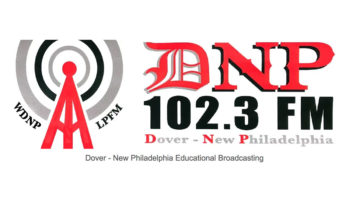
AM owners are asking questions about the upcoming FM translator relocation windows, so the Federal Communications Commission this week answered some of the most frequent. Radio World republishes the answers below.
The commission reminded applicants to refer first to its Oct. 26 public notice for additional information regarding eligibility requirements, application processing standards, construction recruitments, and operational requirements.
Q: Is an AM station that already owns or leases one or more translators eligible to file an application in a Modification Window?
A: Yes. AM stations that currently rebroadcast on one or more FM translators are permitted to participate in one of the Modification Windows.
Q: The Modification Windows allow AM licensees to relocate one non-reserved band FM translator station up to 250 miles. How is the 250-mile limit measured?
A: The 250-mile limit will be measured from the existing translator transmitter site to the proposed translator site; the 250-mile limit is not measured from the translator site to the AM station’s transmitter site.
Q: Can an AM Station relocate a translator during the Modification Windows to any channel or must the translator stay on the original or adjacent channel?
A: The FM translator modification application may specify any non-reserved band FM channel (221- 300). However, the proposed facilities must comply with the Commission’s translators technical rules, 47 C.F.R. § § 74.1201–74.1290.
Q: Can a translator, once obtained and relocated, be changed to rebroadcast another AM or FM station?
A: Not for the first four years of operation. Any FM translator station modified and/or relocated under the Modification Windows must rebroadcast the specified primary AM station for at least four years, not counting any periods of silence by the primary station.
Q: Can an AM station file an application in one of the Modification Windows while the AM station itself has a modification application pending, and subsequently use the translator at the AM station’s future site?
A: The proposed FM translator facilities must satisfy the “fill-in” restrictions applicable to AM/FM translator rebroadcasting. The AM station may rely on either its licensed or permitted facilities to satisfy these restrictions. However, a relocated FM translator may be modified subsequently to use an AM station’s future authorized transmitter site.
Q: If a reserved-band translator has an application pending to move to the non-reserved band, can it participate in the Modification Windows?
A: Only translators authorized to operate in the non-reserved band as of the date of modification application filing are eligible for the modification windows. New unbuilt translator stations are eligible for the Modification Windows, i.e., eligibility is not limited to translator stations that are licensed and operating.
Q: What if two or more applicants file for the same channel on the same day?
A: Pursuant to 47 C.F.R. §74.1233, applications filed for the same channel on the same day are considered mutually exclusive.
Q: How will the Bureau resolve applications that are mutually exclusive?
A: Pursuant to 47 C.F.R. §74.1233(d)(l), mutually exclusive applications must be resolved through settlement or technical amendments.
Q: Can a mutually exclusive applicant file an amendment to move to a different non-reserved band channel to resolve a conflict with a mutually exclusive proposal?
A: Yes. Amendments to move to any rule-compliant channel will be accepted.
Q: If an AM station files a modification application and the transaction to acquire the proposed FM translator fails for any reason, can the AM station dismiss the original application and re-file a second modification application specifying a different translator station, provided the modification window has not closed? Similarly, if the staff dismisses or rejects an application for any reason, can the AM station re-file its application?
A: No. Only one application may be filed by/on behalf of each AM station in either of the Modification Windows; applicants will not be given an opportunity to re-file under any circumstance.
Q: In the AMR Order, the Commission has proposed that an AM station may use a FM cross-service fill-in translator where the FM translator’s coverage contour is contained within the greater of the 2 mV/m daytime contour of the AM station or a 25-mile radius centered at the AM transmitter site. May applicants rely on the proposed fill-in” rule change in selecting an FM transmitter site?
A: No. As stated in the October Public Notice, to participate in the Modification Windows, the FM translator station’s proposed 60 dBu contour must be contained within the AM station’s 2 mV/m daytime contour and may not extend more than 25 miles from the AM transmitter site.
Q: In the AMR Order, the Commission modified the minimum efficiency rules and redefined Class D stations as those operating with a nighttime RMS less than 107.5 mV/m at 1 kilometer. Based on the change, are existing Class D stations, which did not meet the former minimum of 141.0 in V/m/km, but which exceed the new minimum of 107.5 mV/m at 1 kilometer, automatically reclassified as Class B stations?
A: No. The newly adopted rules will not be applied retroactively to existing stations. Thus, an AM station currently classified as a Class D station, including those that operate with a nighttime RMS exceeding 107.5 mV/m at 1 kilometer, may file an application in the First Modification Window. A station seeking re-classification as a Class B station must file a minor change application demonstrating compliance with all applicable rules.









